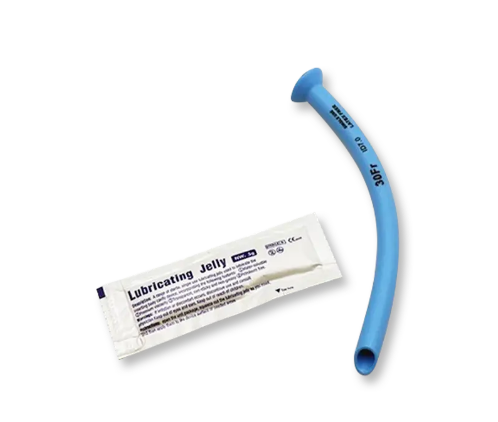TEl: +86-13148388090
Fax:+86-571-88616515
Nasopharyngeal Airway (NPA) Guide
Author: admin / 2025-10-14Introduction
Effective airway management is essential in emergency, anesthesia, and critical care. A Nasopharyngeal Airway (NPA) is a soft, flexible tube inserted through the nose to maintain a patent airway. Unlike oropharyngeal airways, NPAs are better tolerated by conscious or semi-conscious patients, making them ideal in pre-hospital and hospital settings.
Indications and Contraindications
Indications
NPA is indicated when:
- Upper airway obstruction occurs due to tongue or soft palate collapse
- OPA is not tolerated due to gag reflex
- Mouth opening is limited (trauma, trismus, fixation)
- Temporary airway maintenance is needed before intubation
- Continuous suctioning or oxygen delivery via nasal passage is required
Contraindications
Avoid NPA in:
- Suspected basilar skull fracture or CSF leak
- Severe facial or nasal trauma
- Coagulopathy or bleeding disorders
- Nasal obstruction, polyps, or infection
Inserting an NPA in patients with skull fractures can risk intracranial placement.
Preparation and Equipment
Essential Equipment
- Sterile NPAs (various sizes)
- Water-based lubricant or lidocaine gel
- Suction apparatus and catheters
- PPE (gloves, mask, goggles)
- Monitoring equipment (pulse oximeter, ECG, capnography)
- Tape or fixation device
Choosing the Correct Size
- Length: Nostril to earlobe or jaw angle
- Diameter: Slightly smaller than nostril opening
- If uncertain, start with a smaller size to avoid trauma
Step-by-Step Insertion Technique
- Hand hygiene and protective gear
- Inspect nostrils, select the more patent side
- Lubricate the NPA generously
- Position patient (neutral or sniffing, avoid neck extension if spinal injury suspected)
- Insert gently along the nasal floor, bevel facing septum
- If resistance occurs, withdraw and try the opposite nostril
- Confirm placement: airflow, chest rise, breath sounds, oxygen saturation
- Secure with tape or fixation strap
- Document size, side, time, and patient tolerance
Monitoring and Ongoing Care
- Assess airway patency, breathing pattern, and oxygenation
- Check for bleeding, blockage, or displacement
- Suction secretions as needed
- Maintain hygiene and replace NPAs if prolonged use
Potential Complications
- Epistaxis: prevent with lubrication and gentle insertion
- Nasal tissue injury: avoid force, alternate nostrils
- Tube blockage: regular suctioning
- Dislodgement: secure properly
- Sinus infection: replace periodically
- Vagal stimulation: monitor depth, adjust as needed
- Intracranial insertion: avoid in skull fracture patients
Most complications are minor and preventable with proper technique and monitoring.
Removal and Follow-Up
Remove when:
- Patient regains airway reflexes
- Active bleeding, discomfort, or infection occurs
- NPA is damaged or no longer needed
Removal steps:
- Explain to patient if conscious
- Gently withdraw while supporting nostril
- Observe for bleeding or respiratory distress
- Document removal and patient status
BEVER Medical Nasopharyngeal Airways
- BEVER Medical NPAs are designed for safe, gentle, and reliable airway management.
- Made from medical-grade PVC or silicone
- Multiple sizes for adult, pediatric, and elderly patients
- ISO 13485, CE, FDA-certified
- OEM customization available
BEVER Medical NPAs support healthcare professionals in maintaining safe, effective airway access, ensuring every breath counts.
Conclusion
The Nasopharyngeal Airway is a simple yet essential tool for maintaining airway patency in semi-conscious or compromised patients. Proper size selection, gentle insertion, and ongoing monitoring are key to safe and effective use.



